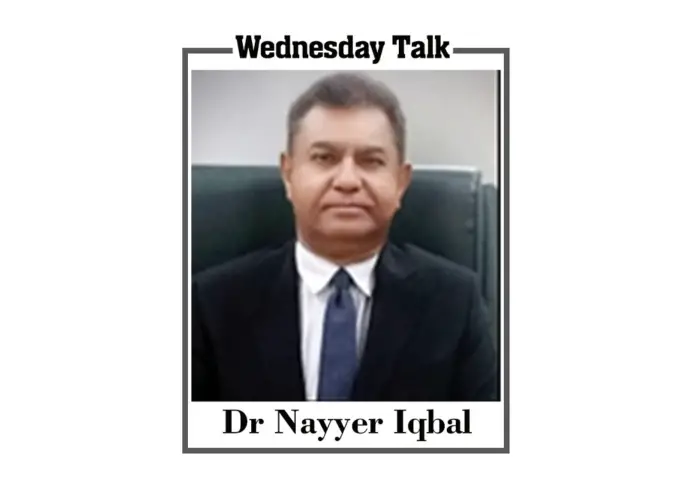On 15th August 2021 when the Taliban seized power in Afghanistan they endeavoured to portray a moderate image of their government for securing international support. However, they could not restrain themselves from show-off their true colours for long. Losing patience within months, they embarked upon transforming their policies and clamping down on human rights and freedoms. At present, the human rights condition in the country is far from being satisfactory; and the UN has called it ‘worrying’ and condemned it being the ‘utter violation of their multiple pledges made before the take-over’. The ‘Human Rights Watch’ has termed it as a ‘nightmare’. Needless to say that it was not expected that the Taliban would reprise the draconian governance of their 1990’s emirate, however, all the presumptions have dashed to the ground within a short span of 16 months.
It is saddening to observe that in the province of politics and governance, the Taliban has not yet been out of the ‘struggling phase’. They have not so far succeeded to establish a formal governance structure and the interim cabinet appointed just after the take-over is pulling on. According to Haroun Rahmani, an international legal expert, the Taliban’s political system is ‘highly under-specified and under-theorized’. They have re-adopted the 1990s title of ‘Islamic Emirate’ for their government headed by an ‘Emir’ believed to be endowed by God with authority. They insist that their rule is in accordance with ‘Islamic law and Afghan values’ however they have not been able to formalize the legal and political principles that command their system. In the absence of any codified law the authorities determine on the spot; the legality or illegality of the action in-question. As indicated by them before the assumption of power, the concept of ‘multiplicity’ was not followed and no political faction apart from Taliban and no ethnicity other than ‘Pashtun’ was given representation in the government. The element of consensus in the decision-making process also seems to be missing, at-least occasionally. The ‘power’ is divided between Kabul-located cabinet and Kandahar-based Emir, Sheikh Haibatullah Akhunzad. This dichotomy was signified on the issue of female education when the cabinet’s decision to allow girls return to high schools was overturned by the Emir, reported to be encircled by ultra-conservative clerics, at the eleventh hour. As per analysis of Andrew Watkins of ‘United States Institute of Peace’ (USIP) the Taliban are ‘engaged in constantly shifting balancing act to maintain equilibrium among the various elements and interests’ and most probably due to this reason their governance model has not yet assumed any concrete shape.
The Taliban regime is adamant in imposing their interpretation of ‘Islamic Sharia’ and they have made it crystal clear that they will not brook any opposition in this regard. Taliban jurisprudence has been basically drawn from Pashtun’s pre-Islamic tribal code and expositions of ‘Sharia’ evolved by ‘Wahhabi’ school of thought. Upholding the flag of self-righteousness, they have summarily executed anti-regime elements and have arbitrarily detained and tortured the perceived opponents. As reported by CNN, the Taliban has stressed upon the Afghan judiciary to impose the Islamic punishments like public executions, amputations and flogging. The music and television has been banned and the men with beards of less than required length are liable to be sent behind the bars. Moreover, the regime has placed the social services and other basic functions of a modern state on the back-burner. The Ministry for the ‘Prevention of Virtue and Prevention of Vice’ has been revived to enforce prohibitions on behavior deemed un-Islamic. Meanwhile, Taliban systematically searched for, detained or executed personnel of ‘Afghan National Security Forces’ (ANSF), officers of the previous government and their families. UNAMA has confirmed 160 extra-judicial killings, 178 arbitrary arrests and at least 56instances of brutal torture. No fair trial or opportunity for self-defense was provided to the accused. All this happened despite the fact that the Taliban had committed in clear words during Doha talks to ensure amnesty for people who served the US-sponsored government from 2001-21.The Taliban are now under-investigation by the ‘International Criminal Court’ for alleged abuses of Afghan civilians.
The erosion of women rights is one of the most notable aspects of Taliban rule. Despite initial commitment that women will be at liberty to exercise their rights within Sharia Law, the Taliban has systematically excluded them from public life. They have not been given any position in the governmental structure and further prospects of their participation in state affairs have been blocked by abolishment of Women Affairs Ministry. The girls have also been prohibited to attend the school beyond sixth grade and the women have been declared ineligible for most of the jobs. Not allowing girls to go to Secondary School means that a generation of girls will not complete their full 12 years of basic education. The women have also been decreed to; (i) wear head-to-toe ‘burqa’; (ii) stay at home except there is an acute necessity; (iii) not to travel without a male supervisor; and (iv) not to visit amusement parks and other recreation places. The ‘Amnesty International’ reports a drastic increase in the number of women arrested for violating these discriminatory orders. According to ‘Human Rights Council’, the situation is so desperate for women that one or two cases of suicide are reported on daily basis. The rates of child marriage have noticeably increased.
(To be continued)…







